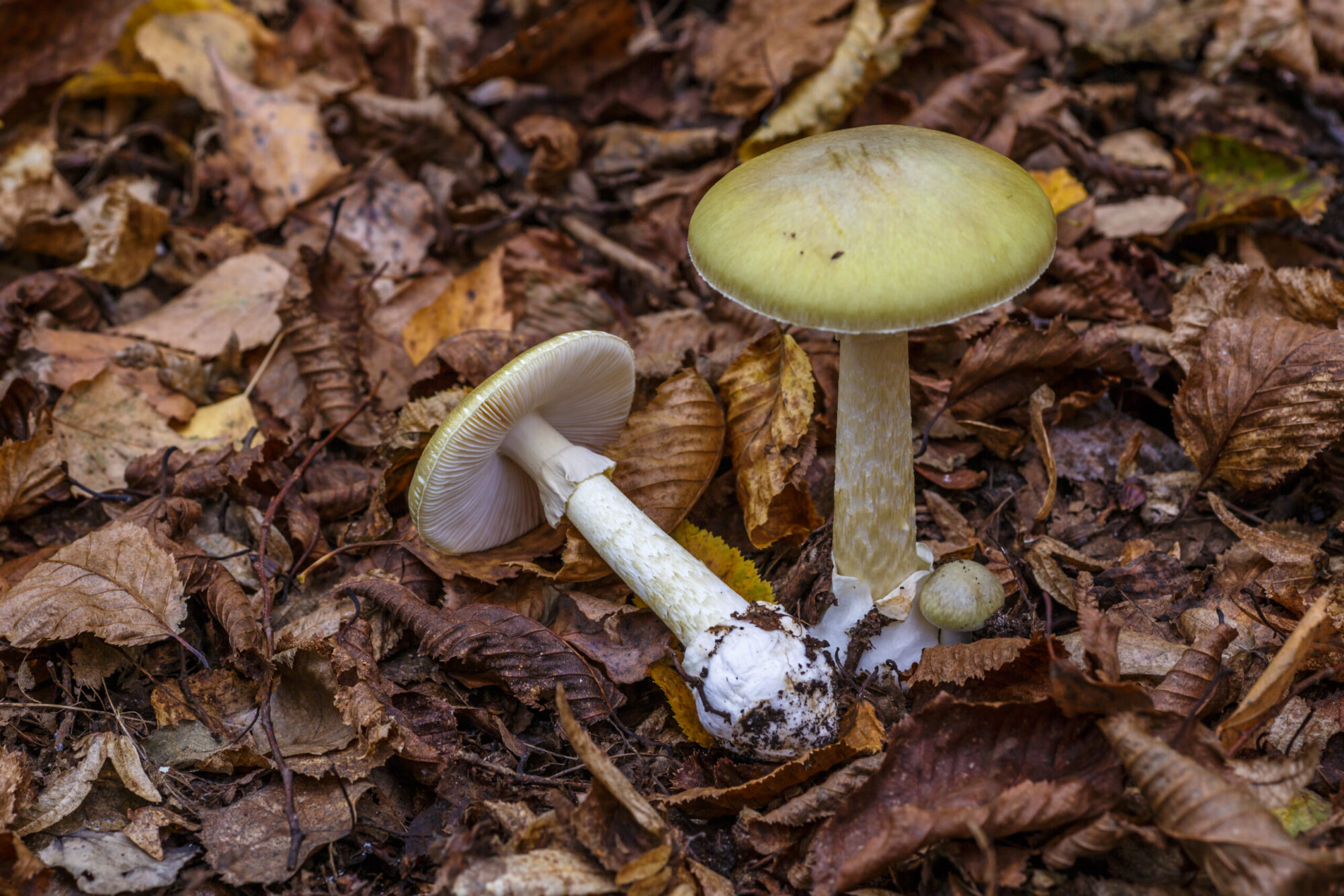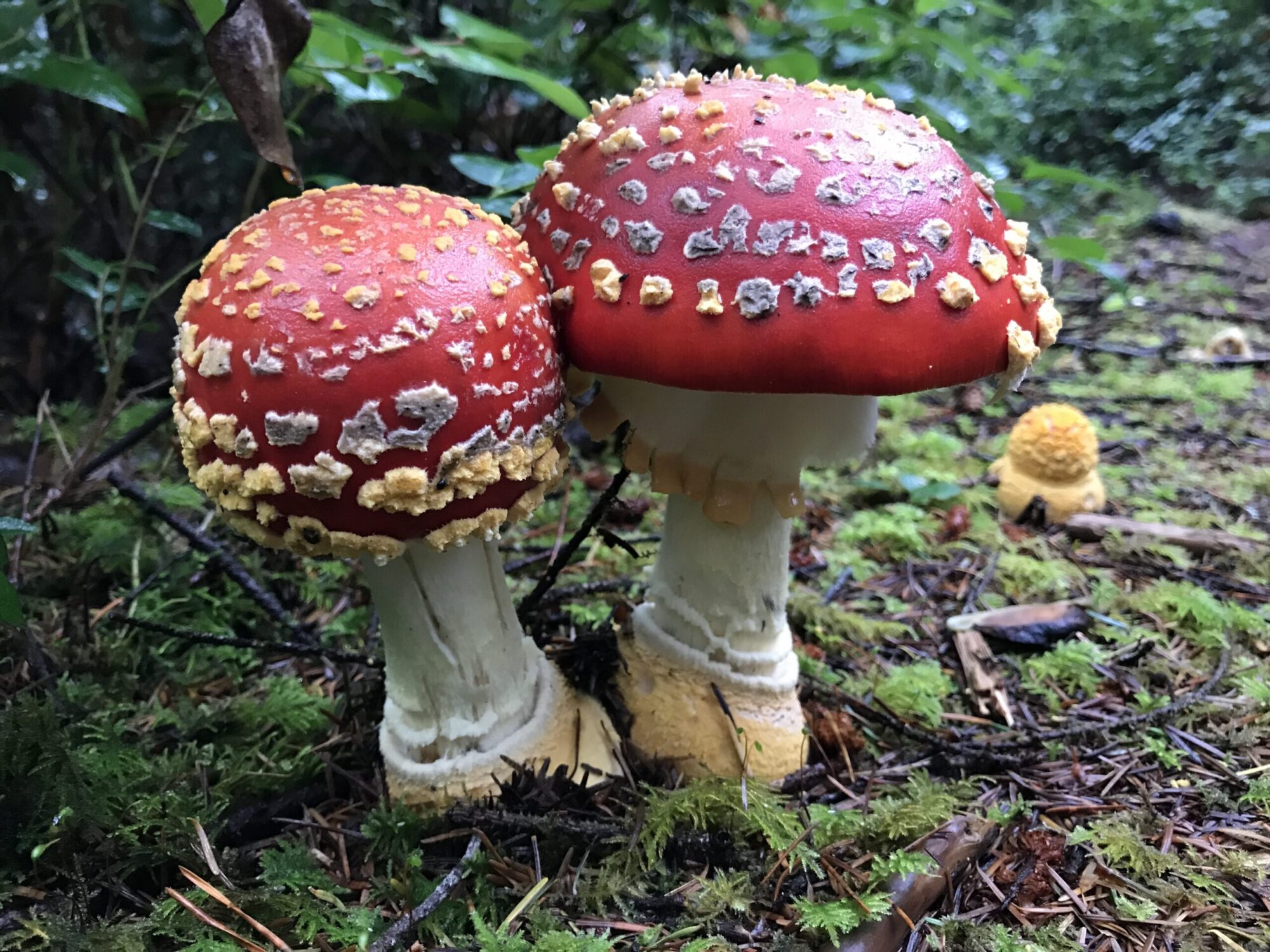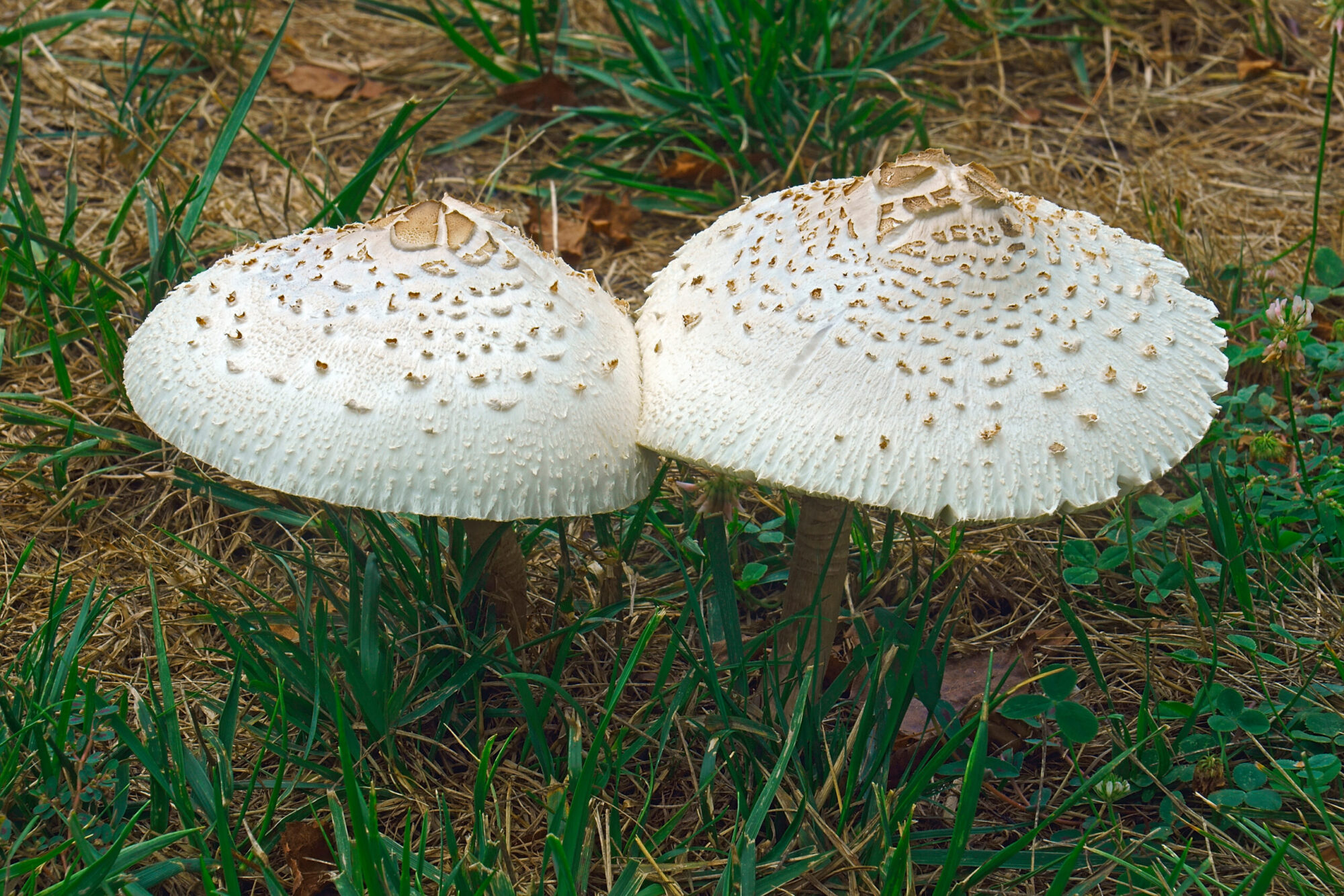There are lots of delicious edible mushrooms that grow across North America. There are even more poisonous mushrooms that foragers should leave alone. When it comes to safe, successful foraging, knowing which mushrooms to avoid is just as important as knowing which mushrooms to pick, if not moreso. Correct wild mushroom identification makes the difference between a tasty pasta dish and a trip to the emergency room.
Foragers aren’t the only ones who should heed this advice. Parents and dog owners should also be aware of what mushroom species they might encounter on a walk or in the grouse woods.
Trent Blizzard, founder of Modern Forager and president of the North American Mycological Association, provides insight on a few high-profile poisonous mushroom species. He explains how to identify them, what symptoms they can cause, and why foragers should never take a risk on an unidentified LBM, or little brown mushroom.
Poisonous Mushrooms: Inedible vs. Toxic vs. Deadly
Before diving into these different species of mushrooms to avoid, it’s important to understand what separates inedible, toxic, and deadly mushrooms. The three categories should not be confused.
“There are only a couple mushrooms we would call ‘deadly,’” which I think is an interesting distinction,” says Blizzard, noting that ‘deadly’ mushrooms can kill humans. “There are inedible mushrooms that would taste horrible and make your stomach hurt. Then, there are a lot of mushrooms that would make you very sick but won’t kill you, and you could call those toxic but not deadly.”
Blizzard notes that certain hallucinogenic wild mushrooms, which contain psilocybin and are ingested for recreational or medicinal purposes, can produce some of the same symptoms that other toxic mushrooms do.
“You might even argue that … psilocybin mushrooms that grow in the wild are toxic,” he says. “They might make you pretty sick as they send you on your brain journey. So even that’s a funny line.”
Death Cap Mushrooms

While most poisonous mushrooms have been graced with self-explanatory nicknames over the years, the death cap mushroom might have the most foreboding alias of them all. Formally known as Amanita phalloides, the death cap kills one to three of every 10 people who eat it. Therefore, the death cap mushroom can definitely be considered deadly.
How to Identify Death Cap Mushrooms
These mushrooms are generally light in color, making them easy to spot in most environments. Their pale yellow, green, or white cap and skirt around the upper part of the white stem are telltale signs of their identity. Immature death caps are shorter and more stout, and the edges of the cap still fold down around the stem. They might even be partially or fully attached to the stem, like a closed umbrella. Mature death caps have wide, flat caps that round down at the edges, more like an open umbrella.
Death Cap Identification
- Rounded cap in young specimens and flat, wide cap in mature specimens with light green, yellow, or white hue
- White gills underneath cap
- Fragile “skirt” attached to stem under cap
- White stem, generally wider at bottom and narrower near cap
Where to Find Death Cap Mushrooms

Death caps are originally native to Europe, but are thought to have traveled to North America on the roots of ornamental trees, according to the Bay Area Mycological Society. They are widespread along the Pacific Coast, from California to British Columbia. There is a large concentration of sightings in urban Vancouver. The death cap’s ability to flourish in urban and suburban environments is one of its deadliest traits, since more adults, children, and pets are likely to encounter them there.
Fly Agaric Mushrooms

You might recognize the fly agaric mushroom from your favorite childhood fairytale or from the cartoon world of the Mario Brothers. The stereotypical toadstool of Amanita muscaria stands out in the woods thanks to its bright red cap with white spots and a white stem. These mushrooms are considered toxic and will make you sick, but they aren’t likely to kill you.
Fly agaric mushrooms are also psychoactive, meaning they cause hallucinations if consumed. For this reason, they’ve been used in a variety of shamanistic rituals for thousands of years. Shamans used to collect fly agaric mushrooms during the winter solstice in northern Europe and Asia while wearing red suits with white trim and black boots. They would bring the mushrooms back to their villages for use in rituals. These shamans are thought to be the original inspiration for the modern Santa Claus, his red and white suit, and his trips down our chimneys with sacks full of presents.
“Amanita muscaria has traditionally been marked as a toxic mushroom. But there’s a ton of lore and symbolism around it,” Blizzard confirms. “That mushroom has played a pretty big role in various cultures around the world.”
How to Identify Fly Agaric Mushrooms
Fly agaric mushrooms are one of the easiest wild mushroom species in the world to identify. Few mushrooms share the same scarlet hue that makes them so visible in green and brown underbrush. Their white bumps also create a distinct, eye-catching pattern.
Under the cap, the fly agaric mushroom has white or cream-colored gills that don’t attach to the stem. Similar to the death cap, these poisonous mushrooms tend to have a light-colored skirt around the stem, as well. They grow up from a cup that is often buried underground, where it attaches to a mycorrhizal network that sustains other mushrooms and tree roots in the area.
Fly Agaric Mushroom Identification
- Poppy red to deep red cap with rounded shape in younger mushrooms and wider, flatter shape in older mushrooms
- White or cream-colored bumps in a random pattern
- White or cream-colored gills under cap
- White stem with skirt
Where to Find Fly Agaric Mushrooms

These poisonous mushrooms exist around the world, but are native to the Northern Hemisphere in Europe and Asia specifically. They prefer birch and conifer forests and usually pop up in late summer and early fall. Much like the death cap, these mushrooms have been introduced in North America and the Southern Hemisphere on relocated trees. A few subspecies of fly agaric exist in the United States. The classic red mushroom is more popular on the West Coast, while a yellow subspecies (identical to the red fly agaric but with a yellow-to-orange cap) exists on the East Coast.
Destroying Angel Mushrooms

Another Amanita species with a scary name, the destroying angel mushroom (also known as the death angel) definitely belongs on the list of poisonous mushrooms to know and avoid. There are two subspecies of destroying angel (Amanita virosa and Amanita bisporigera), which means foragers have a slightly wider range of characteristics to look for. But ingesting either subspecies will first cause extreme intestinal distress marked by nausea, vomiting, and diarrhea before causing liver and kidney damage that could result in both organs failing. Organ damage often occurs the day after ingestion and death can occur within seven days.
“The destroying angel is just a beautiful mushroom,” Blizzard says. “It’s white and very nice to look at, but it will kill you.”
How to Identify a Destroying Angel Mushroom
This poisonous mushroom tends to be taller and skinnier than the death cap and the fly agaric. Its flesh is a bright, clean, white color from cap to stem, giving the mushroom its namesake angelic appearance. The underside of the cap is covered in gills and a skirt surrounds the stem underneath the cap. It also grows upward from a cup-shaped base, which is often buried underground and attached to the bottom end of the stem.

Destroying Angel Mushroom Identification
- White cap, gills, skirt, and stem
- Gills are thin and small
- Stem widens slightly from top to bottom
- Cap might be more rounded in younger specimens, flattens with age
- A. virosa tends to be slightly bigger and taller than A. bisporigera
Where to Find Destroying Angel Mushrooms
The Amanita virosa subspecies is native to Europe, where it occurs in mixed hardwood forests and grassy fields. This subspecies does not exist in North America, but A. bisporigera does, where it’s also known as the Eastern North American destroying angel. As its name indicates, its distribution is limited to the eastern half of the continent and stretches from Canada to Mexico. Both subspecies prefer the same types of habitat with spotty sunlight and pop up in late summer and early fall.
Green-Spored Parasol Mushrooms

This poisonous mushroom is known as the green-spored parasol, or the false parasol. Its common nickname, “the vomiter,” makes clear the unpleasant fate that awaits any forager who eats a Chlorophyllum molybdites. Ingesting this mushroom won’t kill you, but the variety of gruesome side effects ranging from extreme stomach irritation to bloody diarrhea might make you wish it had.
“This pretty little white mushroom grows in the most beautiful grass in a park. People just think ‘Aw, that’s so pretty, I’m going to eat it,’ or children or dogs do,” Blizzard says. “But it’s called ‘the vomiter’ for a reason. I think it’s one of the more common problem mushrooms.”
How to Identify a Green-Spored Parasol Mushroom
The vomiter mushroom has the same general shape as the death cap, fly agaric, and destroying angel: its stem is tall and thin with a skirt that sits just under the cap. This cap ranges from rounded downward to wide and flat, depending on the mushroom’s age. The cap might also have shriveled remnants of a brown peel marking it, exposing a lighter color underneath.
Light tan-green gills under a cream-colored cap give this mushroom its unique name. The green tinge comes from the microscopic spores that live in the gills, which are naturally green. In fact, if you place the cap of a green-spored parasol on a white piece of paper, gill side-down for a few hours, it will leave a green spore print behind. Just be sure to use gloves if you choose to handle any poisonous mushroom and wash your hands after you’re done.
Green-Spored Parasol Mushroom Identification
- Overall creamy tan-colored mushroom
- Younger specimens have rounded cap, while older specimens have much flatter, wider cap
- Cap might have bits of brown peel stuck to a lighter surface
- Under cap, cream-colored gills are tinged green
- Skirt attaches to tan stem
Where to Find Green-Spored Parasol Mushrooms

Lots of poisonous mushrooms prefer mixed hardwood forests and more northerly latitudes. But the green-spored parasol pops up most commonly in more tropical parts of North, Central, and South America. They’re also common in Central Africa and the Pacific Islands.
Homeowners in the Lower Midwest and Southeast, from Missouri to North Carolina to Florida, are used to finding these poisonous mushrooms growing in their lawns. They can show up any time from April to November, as long as the climate is wet and warm.
Little Brown Mushrooms

The infamous little brown mushroom, or “LBM,” isn’t one particular species of mushroom. Instead, the acronym stands for hundreds of species of small, unidentifiable mushrooms that don’t have any major distinguishing features and therefore should be left alone. Some might be deadly, while others might barely harm you. Others still might send you on a wild psychedelic trip that could have long-lasting negative effects. The point is that little brown mushrooms are unknown to even the most expert foragers, says Blizzard, and therefore aren’t worth the risk.
How to Identify Little Brown Mushrooms
LBMs are easy to identify. If you see a small brown mushroom growing in a lawn, meadow, or in the woods, and you have no clue what it is, congratulations—you found one. It could be a deadly Galerina—which has the same toxins as the death cap, fly agaric, and destroying angel—or a less toxic but still inedible lawnmower’s mushroom. There’s no good reason to take the chance on harvesting and eating these fungi.
Little Brown Mushrooms Identification
- Small, standalone or clustered brown mushrooms
- Could grow from the ground, from dead or living trees, or other decaying matter
- Might have flat or rounded caps with gills or folds underneath
- Stems can range in height and thickness, but generally they’re thin compared to the width of the cap
If you come across a little brown mushroom and are curious about it, snap a few photos of the mushroom’s cap, stem, and underside for further research. If the mushroom is growing in your yard or on a public trail, put gloves on and harvest one to take a spore print. Use paper that contrasts the color of the underside—if the gills are really dark, set the cap gill-side-down on white paper. If they’re really light or white, use black paper. Cover the cap with an upside-down drinking glass to protect it (and your counter) for up to 24 hours while it spills its spores on the paper underneath. Spore prints are one trusted method among expert mycologists for identifying mushrooms, or at least for ruling out certain species.
Where to Find Little Brown Mushrooms

LBMs pop up all around the world in a variety of environments. They can grow from early spring to late fall. As is typical with most wild mushroom species, they’re more likely to grow in moist environments and during wetter times of the year. If you keep your eyes peeled the next time you’re outside, it shouldn’t be too hard to find one.
Final Thoughts on Poisonous Mushrooms
An afternoon of foraging, preparing, and cooking wild mushrooms can turn into an evening in a hospital bed if done carelessly. The first step to being a responsible forager is knowing what mushroom species shouldn’t end up on your plate. The rule of thumb is that if you can’t identify a mushroom with 100 percent confidence, you absolutely shouldn’t eat it. Being able to identify poisonous mushrooms with confidence is a crucial skill for all foragers.

“When you consider the range from edible to inedible to toxic to [deadly], there’s no simple little rule of thumb,” Blizzard says. “And even if you did, that rule would be very geographic in nature. That rule could get you sick in California but it could work fine in Virginia.”
Read Next: How to Identify 6 Types of Edible Mushrooms
This list of poisonous mushroom species is far from exhaustive, even with the inclusion of the hundreds of varieties that the LBM category covers. To gain confidence in your foraging abilities, research what poisonous mushroom species you might run into in your area. You should also know what symptoms poisonous mushrooms can cause. That way if you do ever make a mistake, you can seek medical attention as soon as possible.
